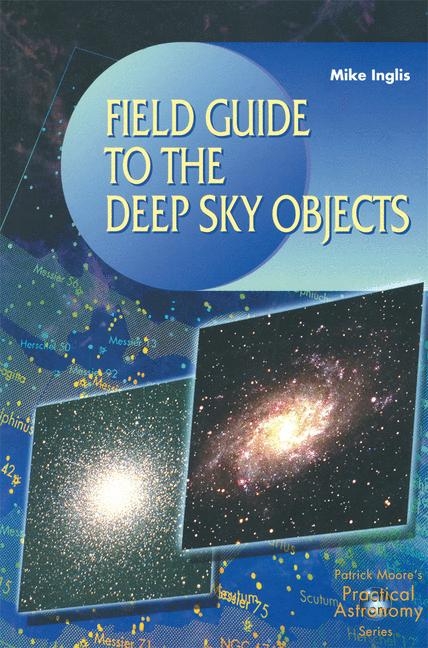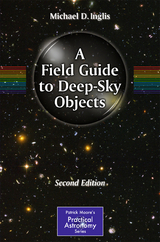
Field Guide to the Deep Sky Objects
Seiten
2001
Springer London Ltd (Verlag)
978-1-85233-630-1 (ISBN)
Springer London Ltd (Verlag)
978-1-85233-630-1 (ISBN)
- Titel erscheint in neuer Auflage
- Artikel merken
Zu diesem Artikel existiert eine Nachauflage
A guide for observers, which follows detailed descriptive summaries of each class of object, and includes extensive lists of deep-sky targets which are classified according to type of object. Each of these groups is organized by month of best visibility, and within that by ease of observing.
Field Guide to the Deep Sky Objects is a uniquely usable guide for observers. Following detailed descriptive summaries of each class of object, it includes extensive lists of deep-sky targets which are classified according to type of object:- Stars (bright, coloured, double, triple, quad, multiple);- The spectral sequence;- Clusters;- Globular clusters;- Stellar associations;- Stellar streams;- Nebulae (emission, dark, reflection, planetary);- Supernovae remnants;- Galaxies (spiral, elliptical, irregular).Each of these groups is organised by month of best visibility, and within that by ease of observing. Simply, this means that you can choose a class of object, and for any month of the year find an observing list that begins with easiest through to progressively more difficult targets!Amateur astronomers of all levels of ability will find this book invaluable for its broad-ranging background material, its lists of fascinating objects, and for its application as "graded exercises" to improve practical observing skills while viewing many different types of deep-sky object.
Field Guide to the Deep Sky Objects is a uniquely usable guide for observers. Following detailed descriptive summaries of each class of object, it includes extensive lists of deep-sky targets which are classified according to type of object:- Stars (bright, coloured, double, triple, quad, multiple);- The spectral sequence;- Clusters;- Globular clusters;- Stellar associations;- Stellar streams;- Nebulae (emission, dark, reflection, planetary);- Supernovae remnants;- Galaxies (spiral, elliptical, irregular).Each of these groups is organised by month of best visibility, and within that by ease of observing. Simply, this means that you can choose a class of object, and for any month of the year find an observing list that begins with easiest through to progressively more difficult targets!Amateur astronomers of all levels of ability will find this book invaluable for its broad-ranging background material, its lists of fascinating objects, and for its application as "graded exercises" to improve practical observing skills while viewing many different types of deep-sky object.
From the contents:Introduction.- Stars.- Star clusters.- Nebulae.- Galaxies.- Faint, Far Away and Invisible.- Appendices: Light Filters. Books magazines and organizations.The complete table of contents can be found on the Internet: http://www.springer.de
| Erscheint lt. Verlag | 12.3.2001 |
|---|---|
| Reihe/Serie | Patrick Moore's Practical Astronomy Series |
| Zusatzinfo | 60 black & white illustrations |
| Verlagsort | England |
| Sprache | englisch |
| Maße | 155 x 235 mm |
| Gewicht | 660 g |
| Einbandart | Paperback |
| Themenwelt | Sachbuch/Ratgeber ► Natur / Technik ► Weltraum / Astronomie |
| Naturwissenschaften ► Physik / Astronomie ► Astronomie / Astrophysik | |
| ISBN-10 | 1-85233-630-7 / 1852336307 |
| ISBN-13 | 978-1-85233-630-1 / 9781852336301 |
| Zustand | Neuware |
| Haben Sie eine Frage zum Produkt? |
Mehr entdecken
aus dem Bereich
aus dem Bereich
die Suche nach der Urkraft des Universums
Buch | Hardcover (2023)
Klett-Cotta (Verlag)
25,00 €
Perspektiven auf die Menschheit
Buch | Hardcover (2024)
Klett-Cotta (Verlag)
25,00 €



